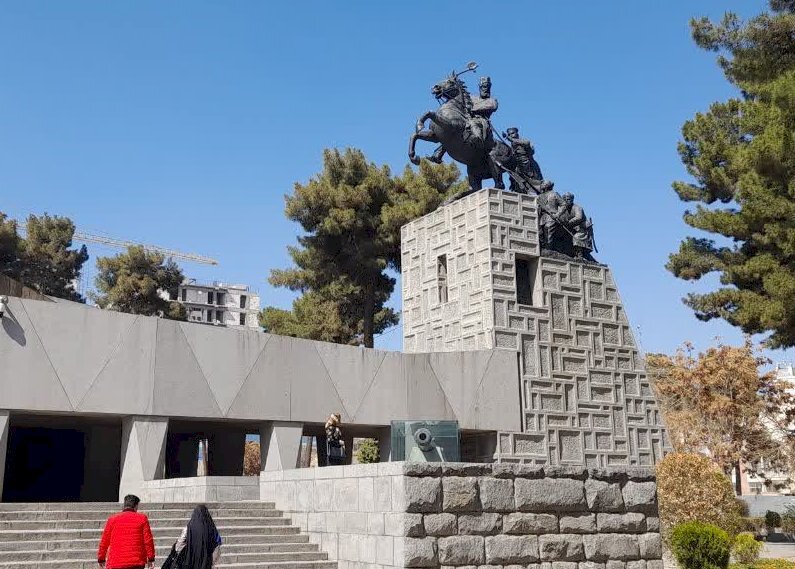Restored Nader Shah statue is unveiled

TEHRAN – A project to restore Mashhad’s statue of Nader Shah Afshar, sometimes referred to as the Napoleon of Persia, has been unveiled.
The unveiling followed months of work by master craftsmen under the supervision of the Research Institute of Cultural Heritage and Tourism, CHTN reported on Monday.
The project is being carried out in collaboration with the Research Institute of Cultural Heritage and Tourism under the supervision of cultural heritage experts, the report said.
Made by Iranian sculptor Fereydoun Sediqi, the statue which depicts the monarch holding an ax, while riding a horse, is one of the biggest of its kind in Iran.
The statue crowns a mausoleum dedicated to the monarch. It showcases various objects from the introduction of the Afsharay period such as weapons, rare paintings, scenes of war, horseback riding objects, rare swords, and several manuscripts, to name a few. Moreover, it displays a variety of coins, dishes, and other objects from the Safavid to the contemporary period.

Born Nader Qoli Beg, Nader created an Iranian empire that stretched from the Indus River to the Caucasus Mountains. He is widely considered one of the most powerful rulers in the history of the nation. He assumed power when a period of chaos overwhelmed Iran.
Nader endeavored to reunite the Persian realm while repelling invaders. He is sometimes referred to as the Napoleon of Persia or the Second Alexander.
According to Encyclopedia Britannica, Nader Qoli Beg had an obscure beginning in the Turkish Afshar tribe, which was loyal to the Safavid shahs of Iran. After serving under a local chieftain, Nader formed and led a band of robbers, showing marked powers of leadership.
With the navy he proceeded to build, Nader Shah was able not only to take Bahrain from the Arabs but also to invade and conquer Oman. In February 1739, after capturing several cities of the Mughal Empire of northern India, he moved against the main Mughal armies at Karnal, India. He won the battle and entered Delhi, returning to Iran with vast amounts of loot, including the fabulous Peacock Throne and the Koh-e-Noor Diamond. He then attacked the Uzbeks around the cities of Bukhara and Khiva; his empire had reached its furthest expansion and rivaled the territorial extent of the ancient Iranian empires.
AFM
Leave a Comment